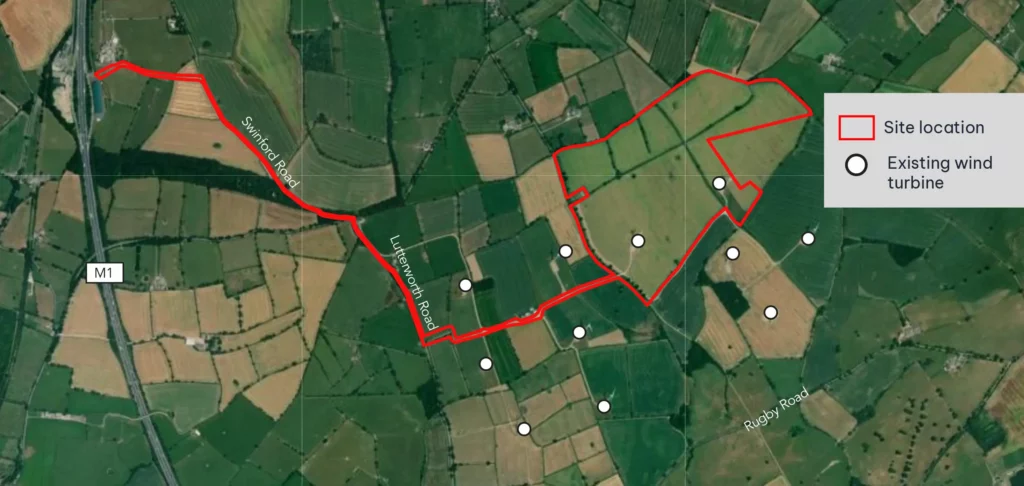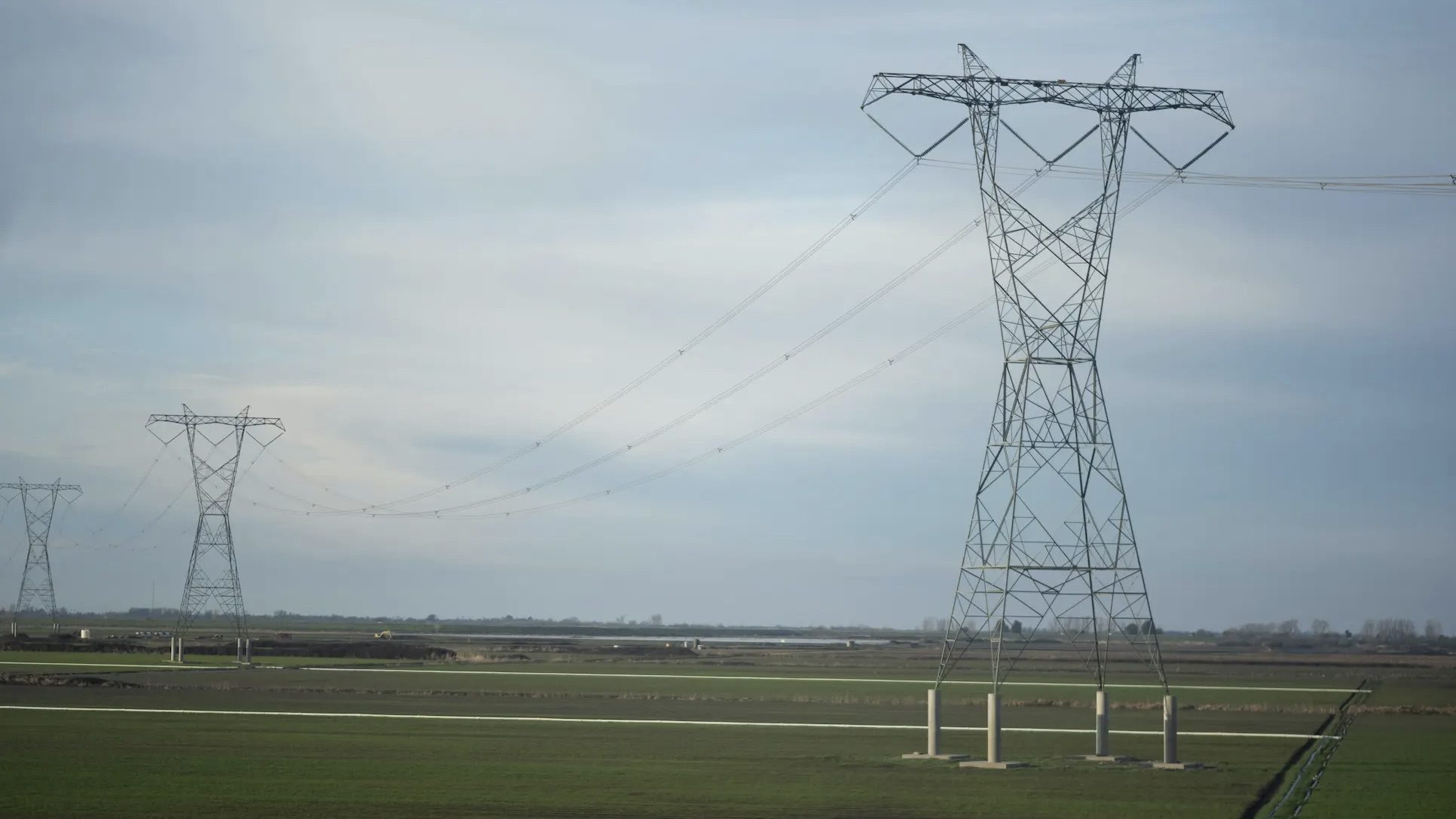
PUBLIC CONSULTATION
Have your say
This site map shows our proposed project boundary and access (red line) in relation to the existing wind turbines (white dots). In selecting the site, we have ensured there is enough suitable land for development while also allowing parts of the site to be used for landscaping and ecological enhancements.
Feedback from the community, along with our ongoing environmental assessments and technical work, is helping to inform our plans for Swinford Energy Park.
All the information published as part of our public consultation is available here. We are continuing to welcome feedback on our plans.

March 2025
Public consultation
We launched our public consultation on 13 March 2025, which included an event at Swinford Village Hall on 24 March 2025.
We are continuing to accept feedback (see below) on our proposal up until we submit our planning application to Harborough District Council.
Harborough District Council will then conduct its own statutory consultation before determining the application.
We are also engaging with Harborough District Council to agree our proposed approach to assessing environmental effects and share the results of our early assessments (called a ‘screening request).
FIND OUT MORE
Document library
You can find out more by reading the documents we have published as part of our public consultation:
FAQs
Swinford Wind Farm exports energy directly into National Grid’s network through its own substation at Swinford Corner. Swinford Energy Park is proposed to import and export electricity from the 400kV overhead lines that passes through the site.
The UK has committed to decarbonising its electricity network by 2030. By this time 95% of electricity generation should come from low carbon sources.
Yet, as we phase out fossil fuels, the demand or renewable electricity is expected to double by 2050. Electricity will continue to play an ever-greater role in our lives, heating our homes (with gas heating of new build homes banned from 2025), powering our future transport systems (the government plans to ban the sale of new petrol and diesel cars from 2030), buildings and industries. That means we need access to reliable, consistent supplies of electricity. Battery storage has a vital role to play: wind and solar farms don’t generate electricity consistently, but batteries allow us to store electricity and release it at times when it is most needed.
That means that our homes and businesses can continue to be powered – even when the sun isn’t shining, or the wind isn’t blowing. It also protects our whole energy system against price shocks or issues with supply abroad. This helps keep electricity affordable and our supplies secure.
The site is located underneath an existing overhead transmission line, which allows us to connect directly into the national grid.
The site was selected as the most suitable location along this transmission line, following a rigorous assessment that prioritised brownfield and industrial land before moving on to greenfield sites.
The site is away from densely populated areas; plus, there are no historic considerations, no sensitive ecological designations, no heritage assets; and the development site is at a low level of flood risk.
Through our site selection and design process, we have ensured that our project would integrate into the surrounding environment and have minimal visual impact.
To screen views into the site, we have proposed new hedgerow and tree planting along its perimeter, as well as bolstering existing hedgerows. We have also designed the site to ensure that built elements are located away from any properties, with the nearest property 350m away from the nearest piece of infrastructure.
On our consultation webpage, we have uploaded wireframes which show that visibility from viewpoints around the site is very limited, and any infrastructure would be viewed in the context of the existing Swinford Wind Farm. At the event, we received feedback about the track which runs adjacent to Swinford Energy Park, and will ensure these views are considered as part of our updated design.
While there would be some additional traffic during construction, the project is not expected to lead to unacceptable road congestion.
The route for construction traffic avoids local villages. Vehicles would leave the M1 at Junction 20 and travel to the site via the A4303, Rugby Road and Swinford Road, then using existing access tracks to reach the site. Any abnormal loads would only be scheduled for non-peak times and would follow the route to the site utilised by Swinford Wind Farm.
Once operational, the site will be managed remotely, with minimal traffic using the local road network.
Yes. All of our projects are designed to the highest safety standards, utilising proven lithium iron phosphate battery technology known for its stability and reliability.
Safety measures would be built into our battery design, such as a fire suppression system, with multiple layers of safety, which would only operate in the very unlikely event of overheating of the batteries. Batteries would also be housed in self-contained units.
We are engaging with specialist fire safety advisors, Leicestershire Fire and Rescue Service, local authority environmental health teams and other statutory bodies to confirm that our proposed designs meet the health and safety requirements set by local and national policy.
Battery storage is safe by design. Given this, the risk of fire is extremely low, though we recognise that it is of the utmost importance to provide reassurance that this has been fully managed.
In the unlikely event of a fire, our systems have inbuilt monitoring and suppression mechanisms that provide several layers of safety.
A Fire Management Strategy would be created and approved by Harborough District Council and the relevant Fire Authority.
Phone Number
0800 038 3486
Email Address
swinford.bess@natpower.ukPostal Address
FAO Swinford Energy Park
FREEPOST SEC Newgate UK LOCAL
Get in touch
"*" indicates required fields
